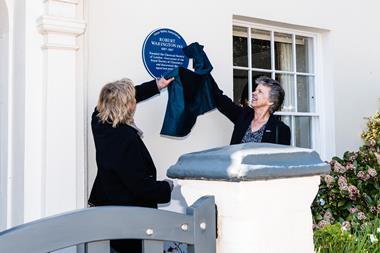A blue plaque honouring two of Manchester's celebrated chemists, Edward Frankland and Henry Enfield Roscoe, has been unveiled in the city.
A blue plaque honouring two of Manchester’s celebrated chemists, Edward Frankland and Henry Enfield Roscoe, has been unveiled in the city.
The plaque, on the side of Cobden House - a building that once housed Owens College, a forerunner of the University - forms part of a series commemorating the city’s chemists.
Frankland, one-time president of the Chemical Society of London and first president of the Institute of Chemistry, was professor of chemistry at Owens College from 1851 to 1857.
He proposed the theory of valency, created one of the first successful water purification processes and was a co-discoverer of helium. His professorship in Manchester was subsequently filled by Roscoe, professor from 1857 to 1886.
Roscoe, president of the Chemical Society 10 years after Frankland, isolated vanadium in 1865 and is credited with helping develop the Bunsen burner, introducing flash photography and designing one of the UK’s first practical chemistry laboratories.
’We hope this plaque will serve as a reminder of the contribution Roscoe and Frankland made to Owens College, and also the significant contributions they have made to chemistry and science as a whole,’ said John Perkins, vice-president and dean of the university’s engineering and physical science faculty.
The plaque was erected with help from the RSC following a request from member Gerald Hayes.
English Heritage, which manages the blue plaque scheme that originated in London in the 19th century, is in full support of other organisations putting up well researched and carefully sited plaques of their own.
’They are a fantastic way of bringing out the connection between people and buildings, and of raising popular awareness about the history around us,’ said a spokesman.
Bea Perks







No comments yet